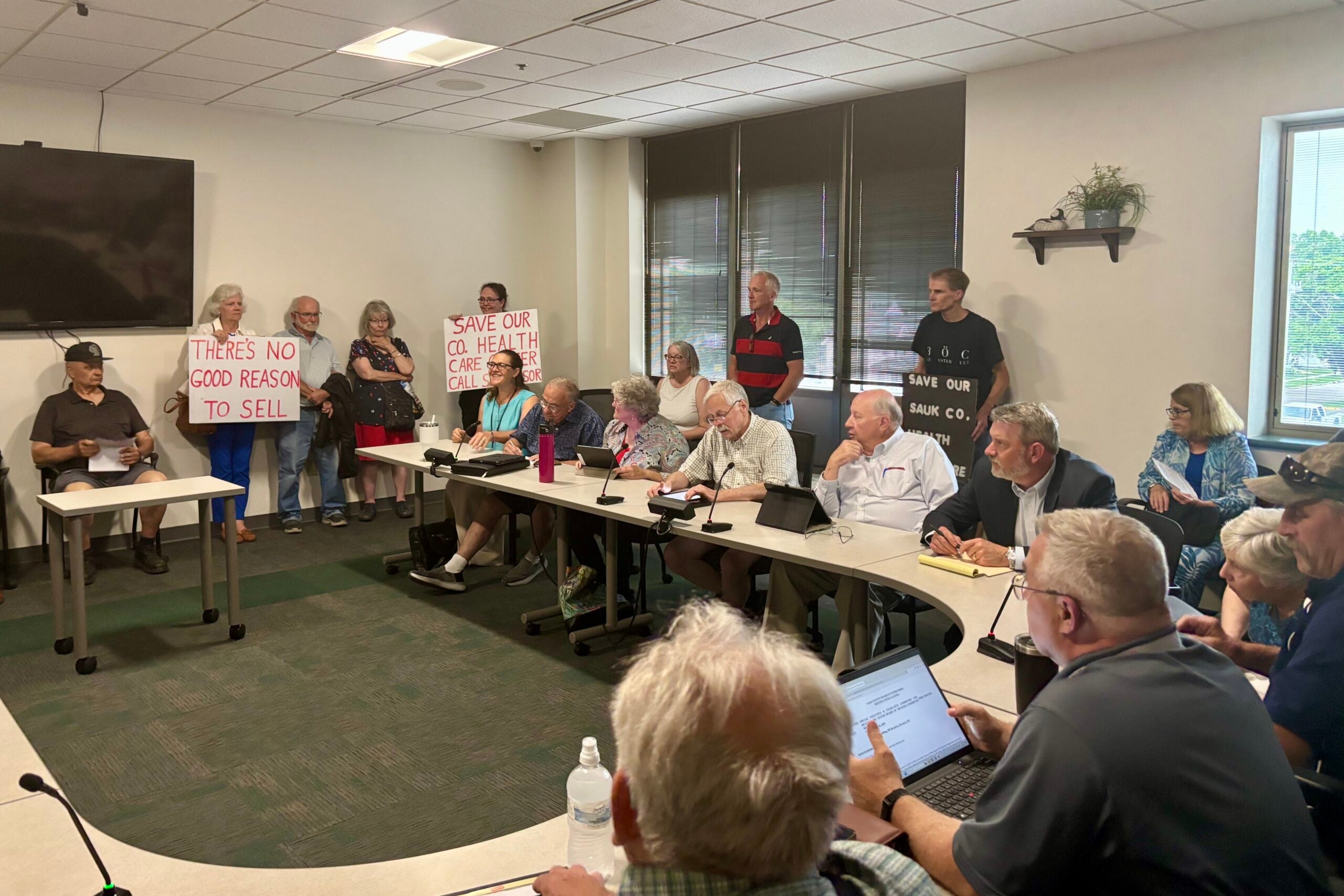As more nursing homes in the state and around the country are sold to for-profit businesses, a health care advocate for aging Wisconsinites said that hurts the quality of life for older adults who rely on them.
On Tuesday, the Sauk County Board voted 18-13 to sell its county-run nursing home to the Milwaukee-based private company ARIA Healthcare for $5.1 million.
Board members said county funding that had gone to the Sauk County Health Care Center would instead be directed toward other senior care programs like Meals on Wheels.
News with a little more humanity
WPR’s “Wisconsin Today” newsletter keeps you connected to the state you love without feeling overwhelmed. No paywall. No agenda. No corporate filter.
Rob Gundermann is president and CEO of the Coalition of Wisconsin Aging and Health Groups. On WPR’s “Wisconsin Today,” Gundermann said the reallocation of funds to other services could be helpful but “that doesn’t provide them with a bed.”
A 2020 Centers for Disease Control and Prevention report found that over 70 percent of nursing homes nationwide are owned by for-profit businesses. Gundermann said he expects that number to continue to grow as rising costs and labor challenges squeeze nonprofit and county-run facilities.
On “Wisconsin Today” Gundermann talked about ownership changes, staff turnover and high costs in the aging health care industry.
The following interview was edited for brevity and clarity.
Kate Archer Kent: Why is this move toward privatization a trend? What’s behind it?
Rob Gundermann: Part of it is reimbursement rates are just not where they need to be. There isn’t enough money going into the system and that really needs to change. The Medicaid reimbursement rates just aren’t meeting where they need to be.
KAK: We saw in recent months the Centers for Medicare and Medicaid Services updating its Medicare payment policies and rates for nursing homes, increasing spending by over 4 percent in fiscal year 2025. What effect could that additional revenue have on nursing homes in Wisconsin?
RG: It’s clearly not enough, but every bit helps. We’re still not gonna be anywhere near where we need to be. And for a nursing home, when you’re converting from nonprofit to for-profit status, there are really only two ways you’re going to generate profit: either you’re going to reduce your expenditures or you’re going to increase your revenue. And typically, what we’re seeing is they decrease their services as part of that.
KAK: In terms of staffing levels, would a for-profit just follow the state/federal regulations for the number of staff that they have to have?
RG: Typically, it’s the minimum. The for-profits typically have fewer staff ratios than the nonprofits do.
KAK: Should we assume that nonprofit or county facilities provide better care than for-profit facilities?
RG: They tend to, they really do. And the thing about these county nonprofit nursing homes is a lot of the time, that’s where someone who has failed out of other places ends up. It’s sort of a place of last resort.
Take a dementia patient who has become aggressive or difficult to handle or they just can’t handle them anymore where they’re at, they send them to these county facilities that are usually able to deal with them.
There’s a real need for these facilities and it’s concerning that we’re losing them.







